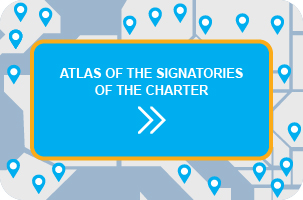The European Union and Gender Equality
Equality between women and men is one of the European Union’s founding values. It goes back to 1957 when the principle of equal pay for work of equal value became part of the Treaty of Rome. Over the past few decades, the EU has notably worked for:
- Equal treatment legislation;
- Gender mainstreaming (integration of a gender perspective into all policies);
- Specific measures for the advancement of women.
2020-2025
With the renewal of the EU institutions following the European elections in 2019, the issue of gender equality made it back on to the political agenda with strong support from the first-ever female Commission President, Ursula von der Leyen, and the creation of a dedicated Commissioner for Equality, Helena Dalli. In her political guidelines for the European Union, Von der Leyen indicated that “equality for all and equality in all its senses” was one of the major priorities of her Commission.
On 5 March 2020, the European Commission published “A Union of Equality: Gender Equality Strategy 2020-2025”, as one of a series of EU initiatives and strategies concerning equality, diversity and inclusion that the Commission will adopt and enact as part of delivering on its headline ambitions “A stronger Europe in the world” and “A new push for European democracy”.
The European Commission’s proposed 2020-2025 Gender Equality Strategy aims at “achieving a gender equal Europe where gender-based violence, sex discrimination and structural inequality between women and men are a thing of the past. A Europe where women and men, girls and boys, in all their diversity, are equal.” It is structured around six themes:
- Being free from violence and stereotypes
- Thriving in a gender-equal economy
- Leading equally throughout society
- Gender mainstreaming and an intersectional perspective in EU policies
- Funding actions to make progress in gender equality in the EU
- Addressing gender equality and women’s empowerment across the world
A dual approach will be taken in implementing the Strategy that combines gender mainstreaming with specific targeted actions to achieve gender equality. It is also the first time that an EU Strategy aims to integrate an intersectional perspective[1] in its implementation.
Gender Equality Strategy Factsheet – Striving for a Union of Equality: The Gender Equality Strategy 2020-2025
[1] According to the 5 March Communication, the Commission understands this as “the combination of gender with other personal characteristics or identities, and how these intersections contribute to unique experiences of discrimination”. The European Institute for Gender Equality (EIGE) defines ‘intersectionality’ as an “analytical tool for studying, understanding and responding to the ways in which sex and gender intersect with other personal characteristics/identities, and how these intersections contribute to unique experiences of discrimination” (see: https://eige.europa.eu/thesaurus/terms/1263)
2016-2019
The Strategic Engagement for Gender Equality 2016-2019 established the Commission’s work programme in terms of gender equality for the 2016-2019 period. It is a comprehensive framework outlining the Commission’s commitments to promote gender equality in all its policies as well as into EU funding programmes. The Commission defined the following priority areas for action:
- Equal economic independence for women and men;
- Equal pay for work of equal value;
- Equality in decision-making;
- Dignity, integrity and ending gender-based violence; and
- Promoting gender equality beyond the EU.
The strategic engagement highlighted the contribution of gender equality to economic growth and sustainable development and corroborated the 2011-2020 European Pact for gender equality. It built on the priorities and experiences of the Strategy for equality between women and men 2010-2015.
The annual progress report for the Strategic Engagement can be found here.















